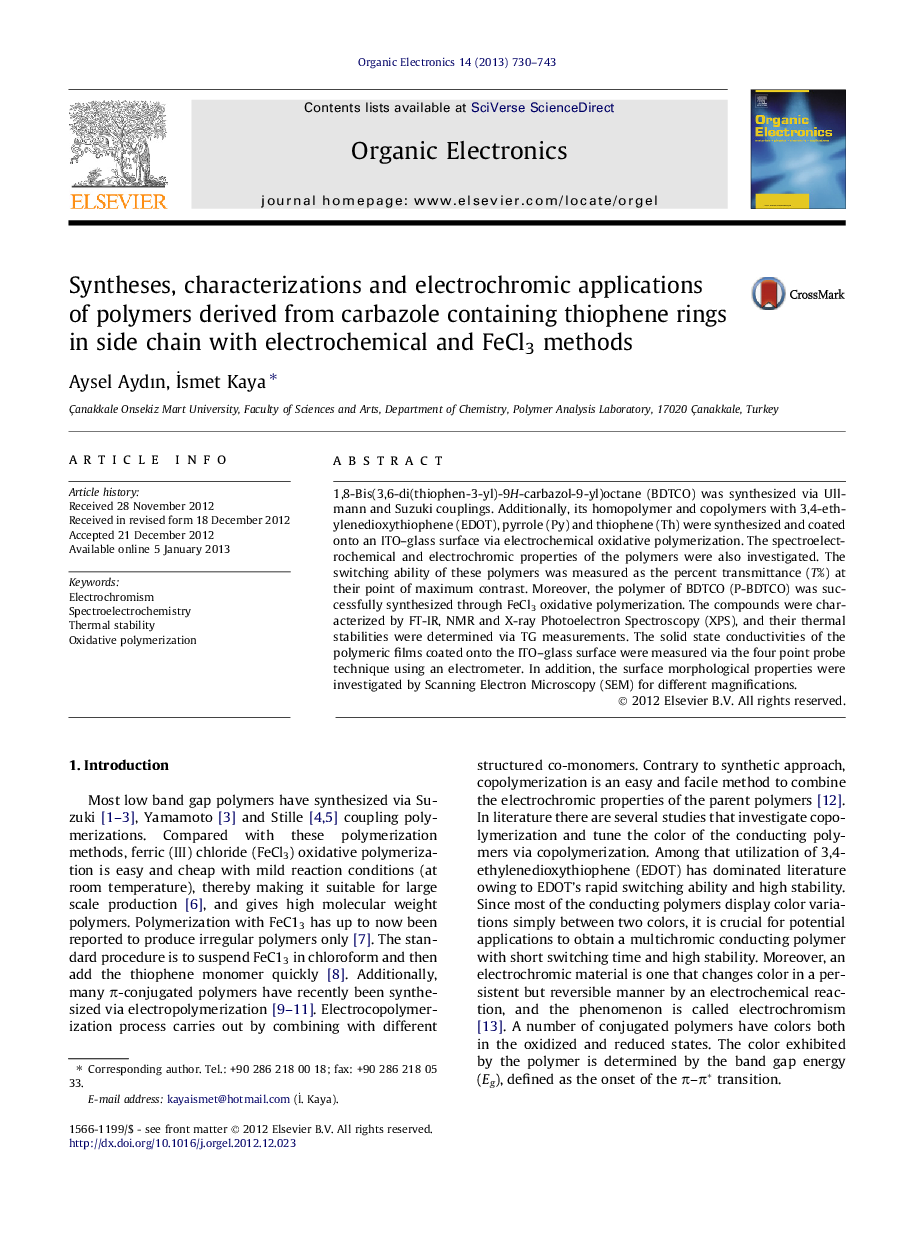| Article ID | Journal | Published Year | Pages | File Type |
|---|---|---|---|---|
| 1267407 | Organic Electronics | 2013 | 14 Pages |
1,8-Bis(3,6-di(thiophen-3-yl)-9H-carbazol-9-yl)octane (BDTCO) was synthesized via Ullmann and Suzuki couplings. Additionally, its homopolymer and copolymers with 3,4-ethylenedioxythiophene (EDOT), pyrrole (Py) and thiophene (Th) were synthesized and coated onto an ITO–glass surface via electrochemical oxidative polymerization. The spectroelectrochemical and electrochromic properties of the polymers were also investigated. The switching ability of these polymers was measured as the percent transmittance (T%) at their point of maximum contrast. Moreover, the polymer of BDTCO (P-BDTCO) was successfully synthesized through FeCl3 oxidative polymerization. The compounds were characterized by FT-IR, NMR and X-ray Photoelectron Spectroscopy (XPS), and their thermal stabilities were determined via TG measurements. The solid state conductivities of the polymeric films coated onto the ITO–glass surface were measured via the four point probe technique using an electrometer. In addition, the surface morphological properties were investigated by Scanning Electron Microscopy (SEM) for different magnifications.
Graphical abstractSyntheses, characterizations and electrochromic applications of polymersderived from carbazole containing thiophene rings in side chain with electrochemical and FeCl3 methodsFigure optionsDownload full-size imageDownload as PowerPoint slideHighlights► 1,8-Bis(3,6-di(thiophen-3-yl)-9H-carbazol-9-yl)octane was synthesized via Ullmann and Suzuki couplings. ► Its copolymers with 3,4-ethylenedioxythiophene, pyrrole and thiophene were synthesized via electrochemical polymerization. ► The polymer was successfully synthesized through FeCl3 oxidative polymerization. ► The compounds were characterized by FT-IR, NMR, XPS and SEM. ► Physical properties of compounds synthesized were good for various applications.
